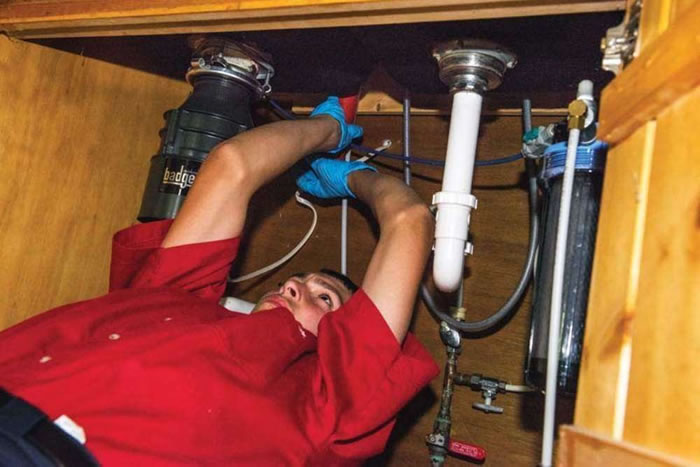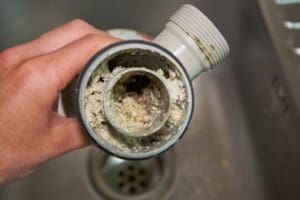The content directly below in relation to Dealing with Low Water Pressure in Your Home is especially attention-grabbing. You should give it a look.

Low tide pressure in your house can be an aggravating trouble, affecting every little thing from bathing to washing recipes. If you're experiencing weak water circulation, there are a number of feasible reasons and remedies to explore. In this overview, we'll talk about common reasons for low water stress and functional actions to deal with the problem successfully.
Intro to Low Tide Pressure
Low tide stress occurs when the circulation of water from your taps, showers, and various other components is weak than normal. This can make daily jobs a lot more challenging and less reliable. Comprehending the root causes of low water pressure is essential to finding the appropriate service.
Typical Causes of Low Tide Stress
Pipeline Obstructions
With time, pipes can become blocked with natural resource, debris, or particles, limiting the flow of water. This is an usual problem in older homes with galvanized steel pipes.
Deterioration
Rust within pipes can result in leakages and lowered water pressure. Rust buildup can constrict water circulation, particularly in aging plumbing systems.
Faulty Pressure Regulators
Pressure regulators are responsible for maintaining constant water pressure in your house. If they malfunction, it can lead to low tide stress or uneven circulation throughout your house.
Municipal Water System Issues
Sometimes, the trouble exists outside your home. Local water problems, such as main line leaks or maintenance job, can momentarily minimize water pressure in your area.
Just How to Diagnose Low Tide Pressure
Checking Faucets and Fixtures
Begin by testing the water stress at different taps and fixtures throughout your home. If the concern is separated to particular areas, it may show localized troubles.
Inspecting Pipes
Check noticeable pipelines for indications of leaks, deterioration, or blockages. Pay attention to any type of unusual noises, such as banging or rattling pipes, which might suggest problems within the plumbing system.
Consulting with a Plumber
If you're unable to determine the source of low tide stress, consider hiring a professional plumber to conduct a detailed examination. They can determine underlying problems and suggest suitable services.
Do It Yourself Solutions to Take Care Of Low Tide Stress
Cleaning Up Aerators and Showerheads
Natural resources can collect in aerators and showerheads, decreasing water circulation. Get rid of and clean these parts frequently to enhance water stress.
Flushing Hot Water Heater
Sediment build-up in the hot water heater can restrict circulation and reduce performance. Flushing the container periodically assists get rid of sediment and preserve optimum efficiency.
Checking Pressure Regulator
Guarantee that the stress regulatory authority is operating properly. Readjusting or replacing the regulator can help bring back appropriate water pressure throughout your home.
Cleaning Clogs in Piping
For minor blockages, attempt making use of a plumbing serpent or chemical drain cleaner to clear blockages in pipes. Be cautious when making use of chemicals and follow safety and security standards.
When to Call an Expert Plumber
If DIY efforts fall short to solve the concern or if you suspect significant plumbing problems, it's ideal to seek help from an accredited plumber. They have the experience and devices to deal with intricate concerns securely and successfully.
Safety Nets to Maintain Water Stress
Normal Maintenance
Set up regular maintenance for your plumbing system to prevent problems such as rust, leaks, and blockages. Dealing with minor problems early can assist prevent even more considerable repair work in the future.
Installing a Stress Booster
Consider setting up a pressure booster pump to enhance water pressure in locations with continually low flow. This can be specifically beneficial for multi-story homes or properties with high-demand components.
Monitoring Water Usage
Be mindful of water use behaviors and stay clear of ill-using the plumbing system. Easy changes, such as staggering showers and laundry tons, can help preserve ample water stress.
Final thought
Dealing with low tide stress can be irritating, however recognizing the underlying causes and applying appropriate options can bring back optimal flow throughout your home. Whether it's cleaning up aerators, examining pipelines, or speaking with a plumber, taking proactive actions can ensure a constant supply of water for your everyday demands.
FOUR WAYS TO FIX LOW WATER PRESSURE NOW
Turning on a shower or faucet only to find the water comes out in a sad, slow drizzle is never a good feeling. How exactly are you supposed to wash a pan or take a quick shower when it takes 10 minutes just to rinse off a little soap? The good news is that when your water pressure is bad, there's always a cause: typically one that can be easily fixed. Here are some of the most common causes of low pressure and what you can do to fix the issue:
DEBRIS AND MINERAL DEPOSIT BUILDUPS
If you notice low water pressure from just one or two of the fixtures in your house, the problem likely has to do with debris buildup. Water is full of minerals and other debris, all of which can accumulate in your pipes and on your fixtures. This can cause a blockage that affects how much water flows through. To fix this, try filling a small plastic bag with white vinegar, and use a rubber band to hang it around your showerhead or faucet. Let the head of the fixture soak for a few hours, and the vinegar should loosen the deposits.
WATER LEAKS
Leaks are another common cause of low water pressure. If water is flowing out of your plumbing through a hole or crack before it can reach your fixture, the pressure coming out of the faucet or showerhead will be lower. A plumbing professional is your best bet for finding and repairing a leak in your water supply pipes.
Leaks are another common cause of low water pressure. If water is flowing out of your plumbing through a hole or crack before it can reach your fixture, the pressure coming out of the faucet or showerhead will be lower. A plumbing professional is your best bet for finding and repairing a leak in your water supply pipes.
A VALVE ISSUE
If you have low water pressure throughout your home, check your main shut-off valve to make sure it's completely open. You may also want to see if there's a pressure-reducing valve installed. If there is, have a plumber help you adjust the settings to get the pressure you're looking for.
OTHERS USING WATER
Believe it or not, your low water pressure could be caused by your neighbors. If you notice low pressure at certain times of day, it may be because you and the people living next to you have similar schedules - when everyone is showering at the same time, the pressure will be lower in every home. Low pressure throughout the neighborhood may also be caused by an issue with your municipal water supply. If that's the case, call the supplier to see if they're working on the issue.
https://www.rotorooter.com/blog/water-leaking/low-water-pressure-fixes/

We hope you liked our piece about 9 Reasons for Low Water Pressure in Your House. Thank you for taking time to read through our post. Kindly take the opportunity to distribute this entry if you appreciated it. I thank you for reading our article about 4 Ways to Troubleshoot Low Water Pressure.
Call Today
Comments on “Practical Strategies for Tackling Low Water Pressure in Your Home”